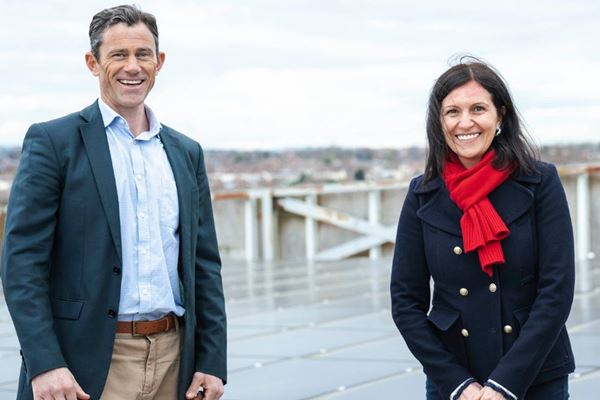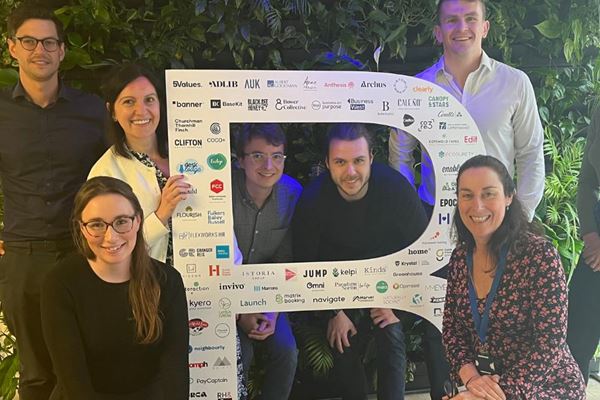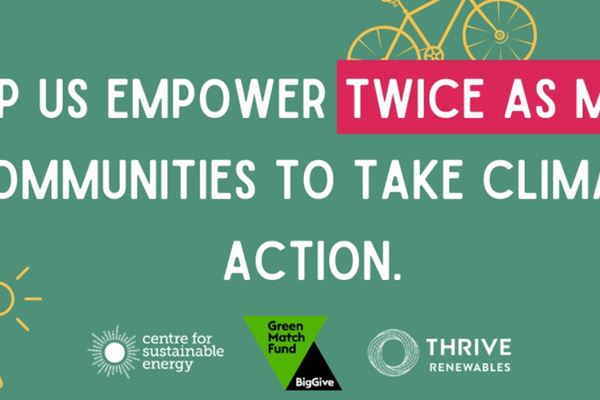At Thrive, reducing carbon emissions and tackling the climate emergency is engrained in our DNA. It’s why we were set up in 1994, with close to 30 years’ experience funding and building new clean energy projects that reduce our reliance on fossil fuels. Below we outline just some of the ways we are working towards net zero – from our own 2030 pledge to supporting UK businesses with their decarbonisation goals through on-site renewables.
1. Funding and building clean energy projects
Thrive invests in a mix of sustainable energy projects that reflect the changes the UK must make to decarbonise the electricity system. To date we’ve funded a total of 32 clean energy projects including onshore wind, hydro, solar, battery storage, geothermal and renewable heat. In 2022, our projects generated 133,858 MWh of clean electricity, enough to power 38,000 homes, and delivered 58,314 tonnes in carbon emissions reductions [1]. In 2022, we allocated £11.4 million to develop new renewable energy projects that will help lower bills, improve the UK’s energy security and power the transition to a net zero electricity system.
2. Joining the race to zero
As a business we are committed to reaching net zero by 2030. In 2022, we made significant progress, publishing our net zero strategy with the SME Climate Hub, a global initiative that empowers small to medium sized companies to take climate action and build resilient businesses for the future. We are pleased to report our Scope 1 and 2 emissions are now at zero - this refers to our direct emissions, such as electricity consumption at our renewable generation sites and in our office. Moving forward, we are focusing on how we measure and reduce our Scope 3 emissions (indirect emissions, including emissions from our supply chain and employee commuting).
3. Engaging communities in renewables
We’re big believers in the role that communities have to play in the energy transition. Not only do local, community-owned projects ensure the benefits of clean energy are open to all, but they also help inform and drive the wider behavioural change. Thrive is proud to support communities with building their own clean energy projects through our multi award-winning funding offer. To date, we’ve invested £16 million in community-owned onshore wind and solar projects, including funding the construction of England’s largest onshore wind turbine.
Through our voluntary community benefit programme – which offers annual energy efficiency grants of up to £30,000 to community buildings close to our sites – we’re helping to ensure the benefits of clean energy are being felt by those who need it most. Additionally, we hold annual community open days and school visits, which give local people the chance to learn more about how renewables work.
4. Supporting businesses in their journey to Net Zero
Businesses have a huge role to play in supporting the UK’s net zero target. As well as working to reduce our own emissions, we work closely with businesses to help fund and build ‘direct wire’ projects. Thrive enables businesses to decarbonise by providing the funding and skills to install and operate renewable energy projects on their commercial premises. For example, we’re proud to have worked with Greenvale AP, one of the UK’s largest potato suppliers, to install a single wind turbine next to their factory – supplying up to 75% of their total electricity.
5. Incentivising green initiatives for staff
We take our carbon footprint incredibly seriously in all areas of our business. Our head office is a certified BREEAM Green Building (one of the greenest in Bristol) and has solar panels located on the roof. Any printed documents, including our Annual Report, are zero carbon. We also look for ways to support our staff in making more environmentally-conscious decisions, this includes offering a bike to work scheme alongside signing up to Possible’s Climate Perks initiative, which allows team members to take two paid ‘travel days’ per year when they choose to travel sustainably rather than by plane.
[1] Average residents per household 2.4 (https://www.ons.gov.uk/peoplepopulationandcommunity/birthsdeathsandmarriages/families/bulletins/familiesandhouseholds/2020)
RenewableUK uses BEIS’s “all non-renewable fuels” emissions statistic of 432 tonnes of carbon dioxide per GWh of electricity supplied in the Digest of UK Energy Statistics (July 2022) Table 5.14 (“Estimated carbon dioxide emissions from electricity supplied”). Carbon reduction calculated by multiplying the total amount of renewable electricity generated by Thrive’s impact portfolio per year by the number of tonnes of carbon which fossil fuels would have produced to generate the same amount of electricity.



